Solar Power
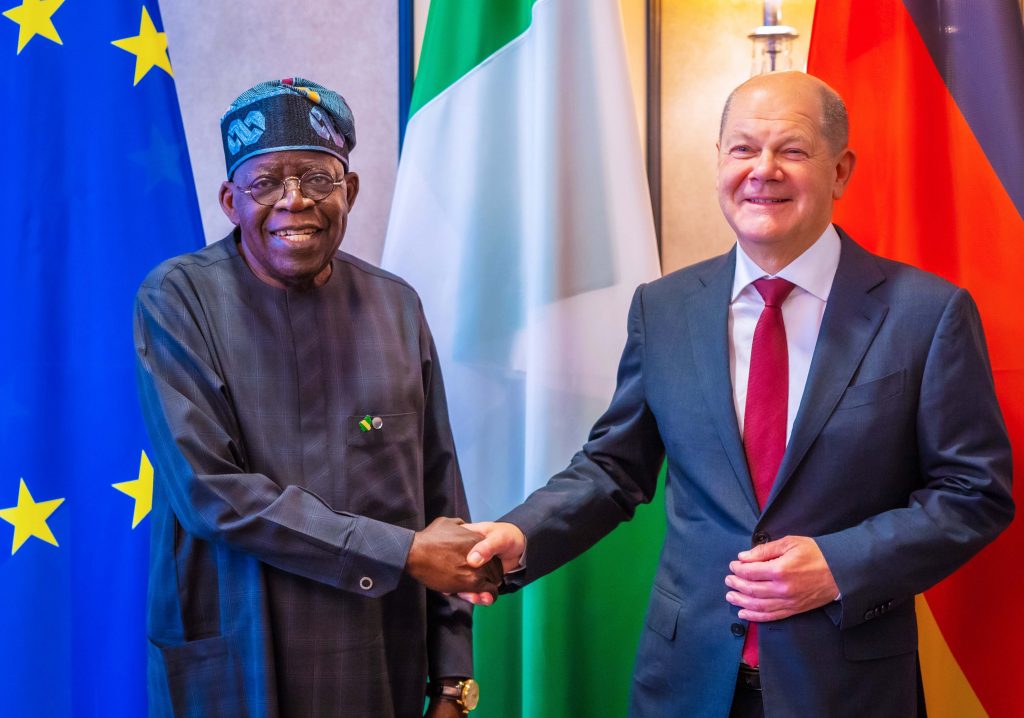
Nigeria and Germany sign gas deal and clean energy investment agreement
Nigeria and Germany have signed a historic agreement that will see Africa’s largest oil producer supply more gas to Europe’s biggest gas consumer. In an MOU signed by Nigeria’s Riverside LNG project, which works in the country’s Niger Delta, and Germany’s Johannes Schuetze Energy Import, Nigeria will export 850,000 tons of liquefied natural gas per year to Germany. The agreement also includes a provision for export volume to increase to 1.2 million tonnes in future. Under the deal, Nigeria is expected to export its first deliveries of liquified natural gas (LNG) to Germany in 2026, which will account for 2% of Germany’s total LNG imports. The deal was signed at the G20 Compact with Africa conference in Berlin on November 21, 2023, according to an official statement from the Nigerian presidency. In addition to the gas deal, Germany has pledged to invest $500 million in renewable energy projects in Nigeria, with a primary focus on rural communities. The investment is expected to create jobs and power sustainable economic growth in the country. “This agreement marks a new era of cooperation between our two countries,” Nigerian President Bola Ahmed Tinubu said. “It is a testament to the strong relationship between Nigeria and Germany and our shared commitment to sustainable development.” Nigeria’s economy, which has been grappling with the impact of falling oil prices in recent years, is expected to benefit positively form the gas deal and renewable energy investment. The deal will also help Germany meet its energy needs while reducing its reliance on fossil fuels.
Read more »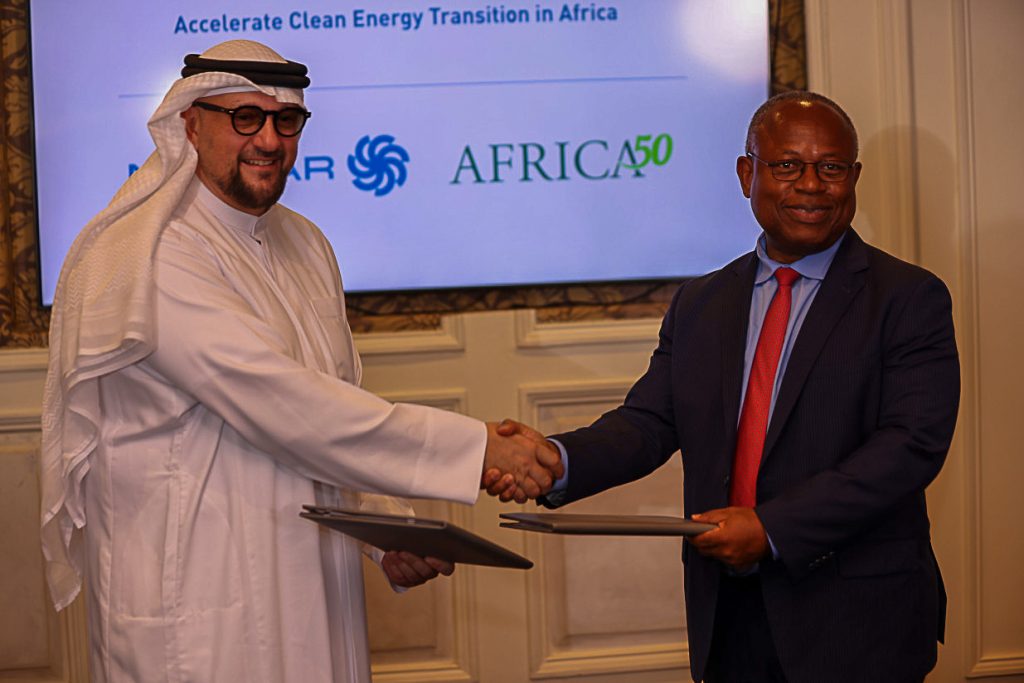
UAE finance initiative aims to unlock Africa’s clean energy potential
A landmark initiative that brings together public, private, and development capital from UAE institutions, is providing $4.5 billion in funding to boost Africa’s energy transition efforts as the continent looks to close an energy deficit that has left 600 million people without access to electricity. The UAE finance initiative is drawing its support from the Abu Dhabi Fund for Development (ADFD), Etihad Credit Insurance (ECI), Masdar, and AMEA Power – all UAE based institutions with experience funding and developing renewable energy projects in emerging markets. Africa50, an investment platform formed by African governments and the Africa Development Bank (AfDB), is also part of the UAE finance initiative. The COP28 President-Designate, H.E. Dr. Sultan Al Jaber, announced the launch of the initiative during a keynote address at the inaugural African Climate Summit last week in the Kenyan capital, Nairobi. “This initiative builds on the UAE’s track record of commercially driven, innovative blended finance solutions that can be deployed to promote the adoption of clean energy in emerging and developing nations,” President-Designate Dr. Sultan Al Jaber said in an official statement, adding the multi-stakeholder partnership approach will accelerate sustainable economic progress, address the challenge of climate change and stimulate low carbon growth. The initiative comes amid calls for the global tripling of renewable energy by 2030, while pushing to make finance more available, accessible and affordable, especially in Africa where an abundance of renewable energy potential remains largely untapped. Unlocking Africa’s clean energy potential with reforms According to findings from the International Energy Agency (IEA), Africa is home to 60% of the world’s best solar resources, yet has only 1% of installed solar generation capacity. For the continent to unlock its clean energy potential, African countries will need to improve policy and regulatory frameworks to attract the long-term investments needed to speed up the deployment of clean and renewable energy. “The initiative will prioritize investments in countries across Africa with clear transition strategies, enhanced regulatory frameworks and a master plan for developing grid infrastructure that integrates supply and demand,” Al Jaber said, noting the initiative is designed to work with Africa and for Africa. “It aims to clearly demonstrate the commercial case for clean investment across this continent. And it will act as a scalable model that can be replicated to help put Africa on a superhighway to low carbon growth.” While delivering greater access to clean energy has been known to drive social and economic development, the COP 28 President-Designate adds that current investment in African renewables represents only 2 percent of the global total, and less than a quarter of the US$60 billion a year the continent needs by 2030. The initiative seeks to correct this imbalance by bringing key stakeholders together to speed up the delivery of relevant measures, including that of infrastructure, to close the gap in universal clean energy access. Unlocking capital for clean power The initiative will form part of Etihad 7, a development platform launched by the UAE to raise 20GW in renewable energy capacity and provide 100 million people across the African continent with clean electricity by 2035. To catalyze private sector action, ADFD is funding the initial investment with US$1 billion of financial assistance to address basic infrastructure needs, offer innovative finance solutions and increase mobilization of private investments. The ECI is providing US$ 500 million of credit insurance to de-risk and unlock private capital. Masdar, one of the world’s largest clean energy companies, active in 22 countries in Africa, is committing an additional US$2 billion of equity as part of the new initiative. Masdar has been moving into the renewable energy sector in Africa as part of the Etihad 7 programme. In January, the company announced it signed an agreement with Angola, Uganda and Zambia to develop renewable energy projects with a combined capacity of up to 5 gigawatts (GW) as part of the programme. With the UAE finance initiative, the company aims to mobilize an additional US$8 billion in project finance through its Infinity Power platform, targeting the delivery of 10 gigawatts (GW) of clean energy capacity in Africa by 2030. AMEA Power looks to install 5GW of renewable energy capacity in the continent by 2030, mobilizing US$5 billion, of which US$1 billion will come from equity commitment, and US$4 billion from project finance. The company has been active in Africa for several years already. Earlier this year, it notably executed a 25-year Power Purchase Agreement (PPA) with GreenCo Power Services (GreenCo) for an 85MW solar PV power plant in South Africa as an energy crisis pushes more demand for alternative sources of power in one of Africa’s biggest economies. The initiative is also pursuing pathways for other multilateral development banks, governments, and philanthropies to catalyze additional private sector investment. At the inaugural African Climate Summit in Nairobi, the COP28 Presidency called for others including international financial institutions (IFIs) and foundations to join the effort to convert words into actions.
Read more »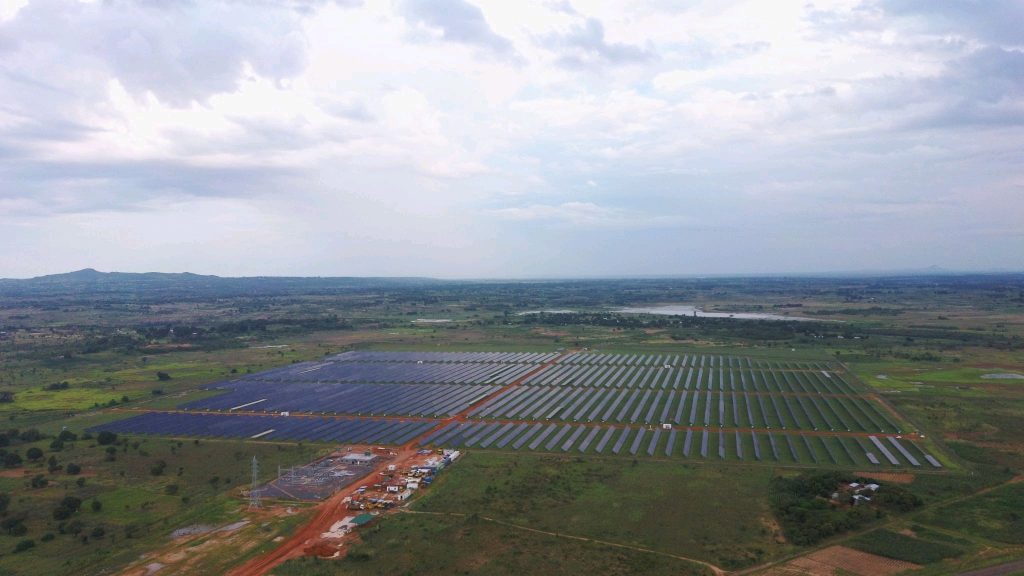
Malawi: Serengeti Energy completes phase 1 of Nkhotakota solar PV plant
Serengeti Energy has energized the 21 MWac Nkhotakota solar PV plant in Malawi last month, the company said last week. The energization of the facility was achieved on February 19 and paves the way to its commissioning and start of commercial operations. The project constitutes Phase 1 of the Nkhotakota solar PV plant which will ultimately reach a capacity of 38 MWac. Nkhotakota is one of many similar solar projects built in Malawi that also include JCM Power’s 60 MWac Salima and 20 MWac Golomoti facilities.
Read more »
UAE to inject $2bn into solar projects in Zambia
Zambia and the United Arab Emirates have signed a Memorandum of Understanding (MoU) during the Abu Dhabi Sustainability Week towards the development of 2 GW of solar energy in the Southern African state. The MoU provides for the establishment of a joint-venture between the UAE’s state-owned entity Masdar and Zambia’s state-utility ZESCO. The project seeks to diversify Zambia’s energy mix after repeated droughts have severely curtailed the country’s production of hydropower. The new joint-venture will target the installation of 2 GW of solar PV power, starting with an initial phase of 500 MW. The Government of Zambia has been committed to solar energy for several years and joined the International Finance Corporation’s Scaling Solar Initiative in 2015. The competitive auction has already resulted in the commissioning of two solar PV plants in 2019: Enel Green Power’s 34 MW Ngonya facility and Neoen’s 54.3 MW Bangweulu facility.
Read more »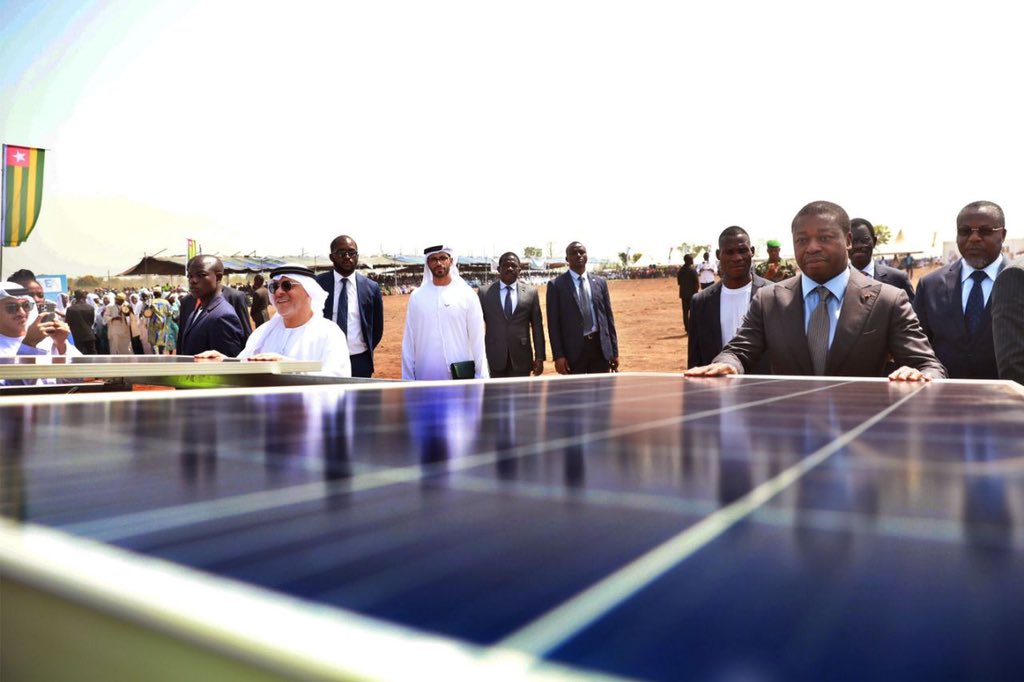
AMEA Power on an exponential growth trajectory in Africa
AMEA Power, a Dubai-based developer, owner and operator of green energy projects, has developed a strong appetite for Africa over recent years. The company already built West Africa’s biggest solar plant, a 50 MW PV facility in Blitta, Togo. Its commissioned and under-construction solar projects total some 130 MW, spread between Morocco, Burkina Faso, Togo, and Uganda. The company has now embarked on a significant scaling up of its renewable energy capacity on the continent via new solar, wind, and hydrogen projects. Its has a pipeline of over 1 GW of solar PV projects in various stages of development in Morocco, Tunisia, Egypt, Mali, Chad, Gabon, Angola, and Djibouti. In November 2022, it also signed an MoU for a new 50 MW facility in Malawi, and announced in January 2023 the signing of a concession agreement and 25-year power purchase agreement (PPA) for a new 50 MW solar PV project in Côte d’Ivoire. Its African portfolio is also on the verge of diversification, with wind projects of some 950 MW in total being developed in Morocco, Egypt, Ethiopia, and Kenya. Last but not least, AMEA Power intends to leverage on Africa’s significant renewable energy potential to produce green hydrogen. It has currently selected Morocco, Egypt, Ethiopia, and Angola for up to 3.5 GW of green hydrogen projects that could be approved over the coming years.
Read more »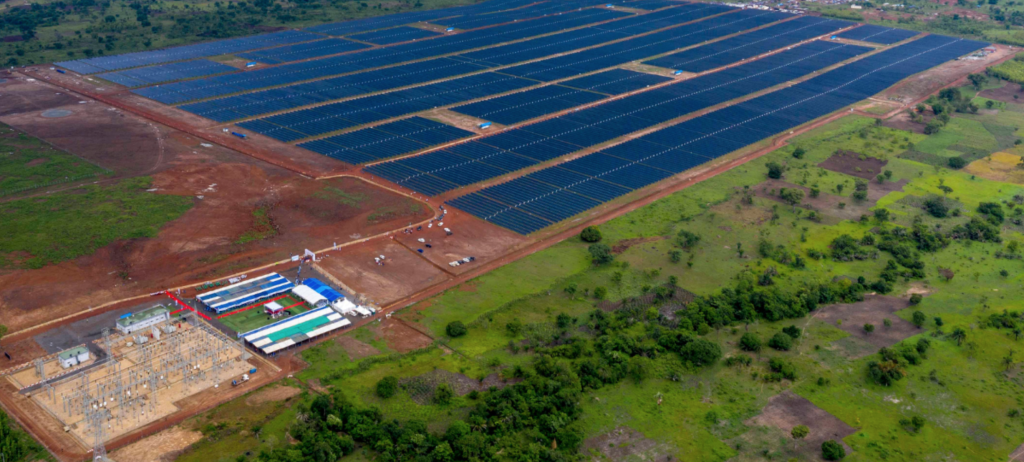
AMEA Power to expand Togo’s flagship solar PV plant
AMEA Power has secured $25m in debt from the Abu Dhabi Exports Office to expand Togo’s Blitta solar PV facility. The 50 MW project, known as the Sheikh Mohammed Bin Zayed Solar Power Plant, was commissioned in June 2021 and is currently able to supply power to almost 160,000 Togolese households. Its expansion phase will add another 20 MW of solar power generation capacity and see the installation of a 4 MWh Battery Energy Storage System (BESS) to enable the supply of clean power at night. Upon completion, the 70 MW plant will be West Africa’s biggest solar PV station.
Read more »
CrossBoundary Energy and ENGIE to spend $60m on Nigerian mini-grids
CrossBoundary Energy Access Nigeria (CBEA) and ENGIE Energy Access Nigeria have announced a new project finance agreement to build $60m worth of mini-grids in Nigeria. Undea the deal, both companies target the connection of 150,000 Nigerians to electricity. CBEA will finance the development and construction activities and own the projects, while ENGIE will provide long-term operations & maintenance (O&M) services for the mini-grids.
Read more »
Ncondezi Energy launches feasibility study for 300 MW of solar PV plus BESS in Mozambique
LSE-listed Ncondezi Energy announced last week that it has launched a feasibility study for up to 300 MW of solar PV power plant plus a battery energy storage system (BESS) in Mozambique. The project is planned in the country’s Tete Province where the company is already developing an integrated coal mine project under mining concession 5967C. The solar power plant is planned by its subsidiary, Ncondezi Green Power Holding, and would connect to the Mozambican grid to supply electricity to the country and the larget Southern African Power Pool (SAPP). WSP Group Africa has been selected to carry out the study, expected to last four months. Electricity production could then start as early as 2024. “The FS Study will take a modular design approach to the Solar Project allowing for greater flexibility including the potential for a scaled development programme of 30MW, 60MW, 100MW, 200MW and 300MW,” Ncondezi Energy said. In October last year, Ncondezi Energy had already commissioned its maiden commercial & industrial 400 kWP solar and 912 kWh battery storage project in Mozambique.
Read more »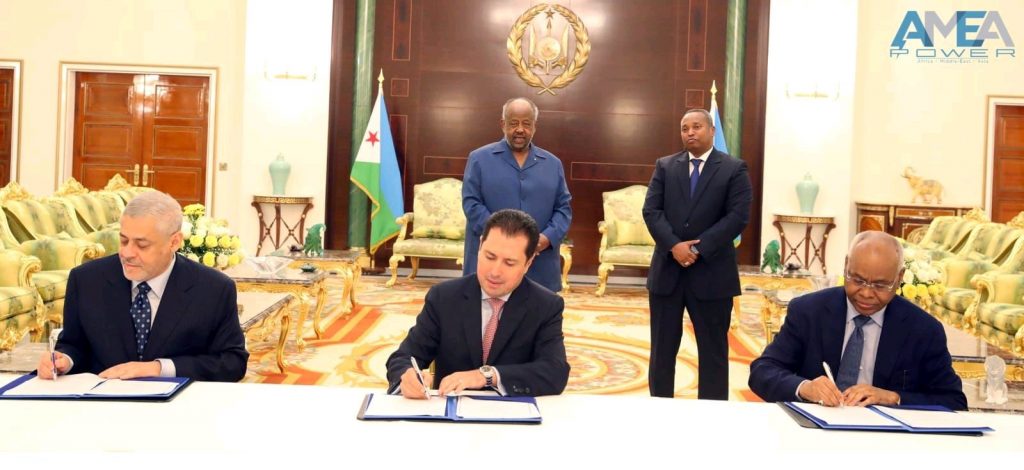
AMEA Power to build 30 MW solar plant in Djibouti
Earlier today, AMEA Power announced the signing of an Implementation Agreement (IA) and Joint Development Agreement (JDA) for a new 30 MW solar PV plant in Djibouti. The official ceremony was held in Djibouti in the presence of His Excellency President Ismail Omar Guelleh. The project will be Djibouti’s first solar independent power producer (IPP) and demonstrates the country’s commitment to ramping up renewable energy capacity. In Ghoubet, near Lake Assal, Siemens Gamesa is currently completing the construction of a 60 MW wind farm on behalf of Red Sea Power, the country’s first wind IPP. The project is majority owned by the Africa Finance Corporation (AFC).
Read more »
Zimbabwe’s leading cement supplier to switch to solar energy
Yesterday, PPC Zimbabwe broke ground on two solar PV plants in Bulawayo and Gwanda in southwestern Zimbabwe. The facilities will have a combined generation capacity of 30 MWac and were awarded to a consortium of the African Transmission Corporation (ATC) and Sinohydro Corporation following a competitive tender. The consortium’s project company, CentraWest, is mandated to develop, finance, construct, maintain, operate, and own the project. Construction includes the associated transmission integration infrastructure to supply PPC’s cement manufacturing operations in Coleen Bawn and Bulawayo. “To ensure reliable and quality supply of electricity to PPC Zimbabwe, a 9MW/18MWh battery energy storage system will be installed at the Gwanda site. This is one of the largest grid scale electricity storage systems to be built in Africa,” ATC Managing Director Victor Utedzi said. Construction works will generate 500 local jobs and are expected to be completed at the end of this year. ATC is steadily establishing its leadership within Zimbabwe’s solar industry. In 2019, it already developed the 2 MW Centragrid solar PV plant at Nyabira, which it is now expanding to 25 MW. Details on the project are available within the Hawilti+ research terminal.
Read more »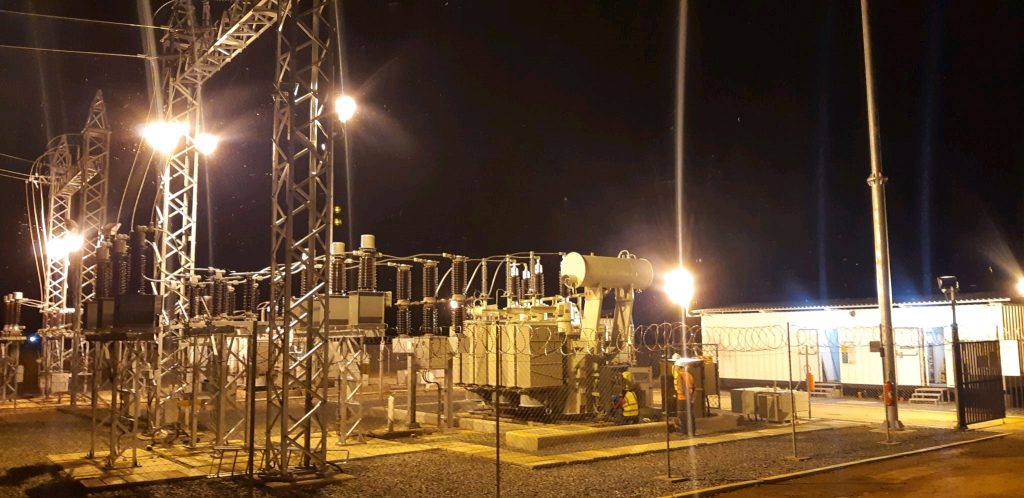
Madagascar: Ambatolampy 20 MW solar substation energized
The Ambatolampy 20MW 20/63KV solar substation, built by Malgasy contractor ENERTEC MADA, was successfully energized on April 9th. This marks a new critical milestone in the expansion of the Ambatolampy solar PV plant from 20MW to 40MW. The end of construction on the second phase of 20 MW had already been announced by AXIAN Energy’s CEO Benjamin Memmi back in February this year. The initial 20 MW facility was developed by Green Yellow, an affiliate of France’s mass-market retail Casino Group, and has been producing clean power since 2018. It remains until today the largest solar plant in the Indian Ocean. Malgasy conglomerate Axian eventually acquired 51% of the solar plant’s shares in June 2020 before embarking on an expansion to 40 MW while equipping the facility with a 5 MWh energy storage system. Full details on the Ambatolampy Solar PV Plant in Madagascar are available in the “Projects” section within your Hawilti+ research terminal.
Read more »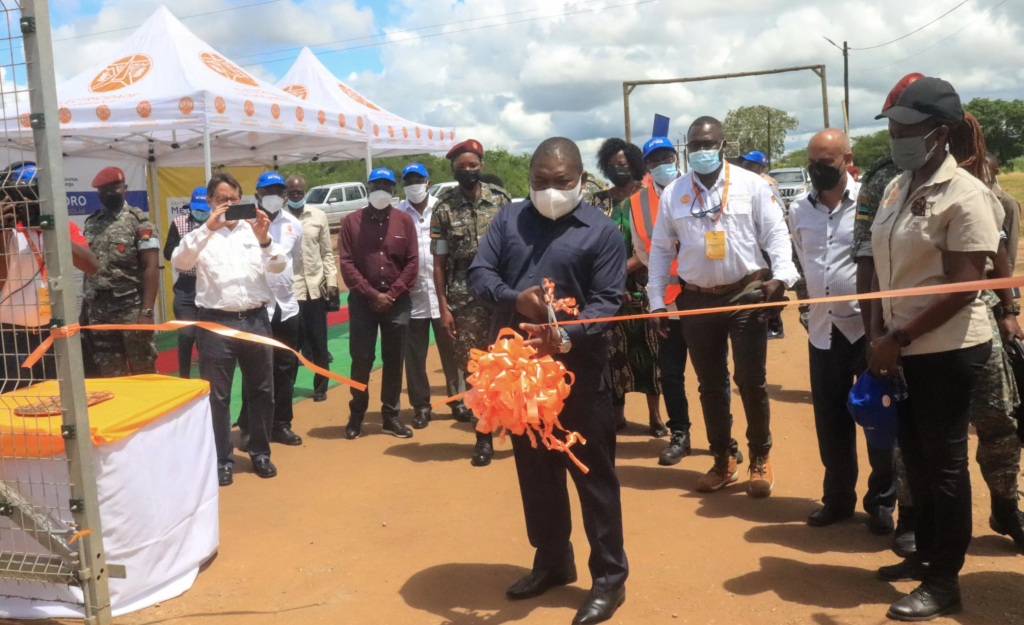
Mozambique inaugurates its largest solar PV plant yet
Last week, President Filipe Jacinto Nyusi of Mozambique inaugurated the 41 MWp Metoro solar PV plant, built in the northern Cabo Delgado province. The $56m facility is owned by French IPP Neoen (75%) and state utility EDM (25%) and was built by Portuguese contractor Efacec. It was financed by a $40m debt package provided by the French Development Agency and its subsidiary Proparco. It is Mozambique’s largest solar plant and notably follows the inauguration of Scatec Solar’s 40 MW Mocuba solar plant in the Zambézia Province in 2019. Central Solar Metoro’s 121,500 PV modules are able to generate up to 69 GWh a year for the Mozambican grid, ensuring the consumption of some 140,000 people.
Read more »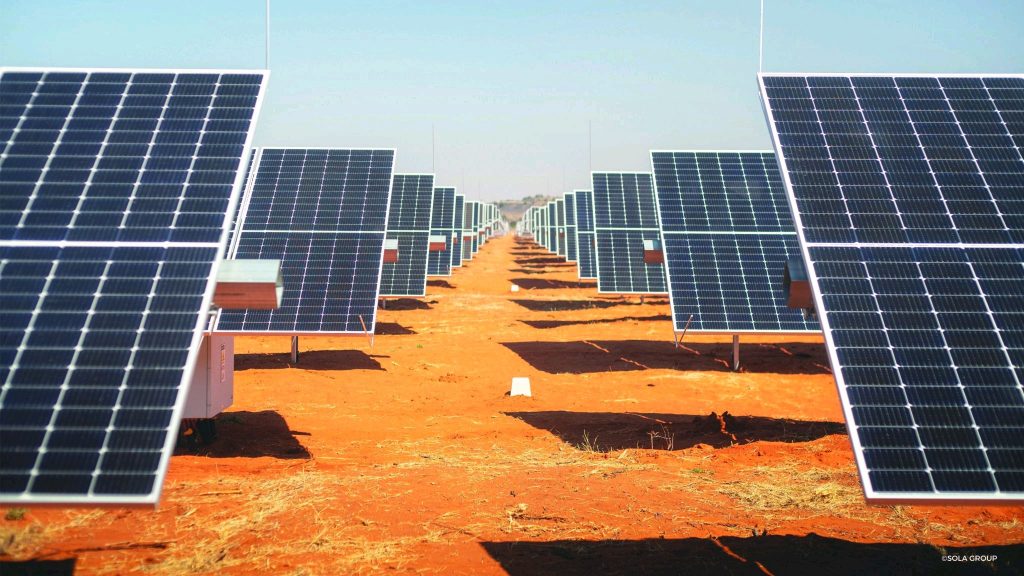
World’s leading titanium manufacturer to set up 200 MW solar plant in South Africa
Tronox Holdings, one of the world’s leading producers of high-quality titanium products, has signed a power purchase agreement (PPA) this week with South African IPP SOLA Group for 200 MW of solar power capacity. The project is expected to be commissioned by Q4 2023 and supply clean energy to Tronox’ mines and smelters in South Africa. “This 200 MW solar project is expected to provide approximately 40% of Tronox’s South African electricity needs and lower its worldwide scope 1 & 2 emissions by approximately 13%,” Tronox said in a statement. The company has set a target of aligning with a global warming scenario below 2° C and achieve net zero GHG emissions by 2050.
Read more »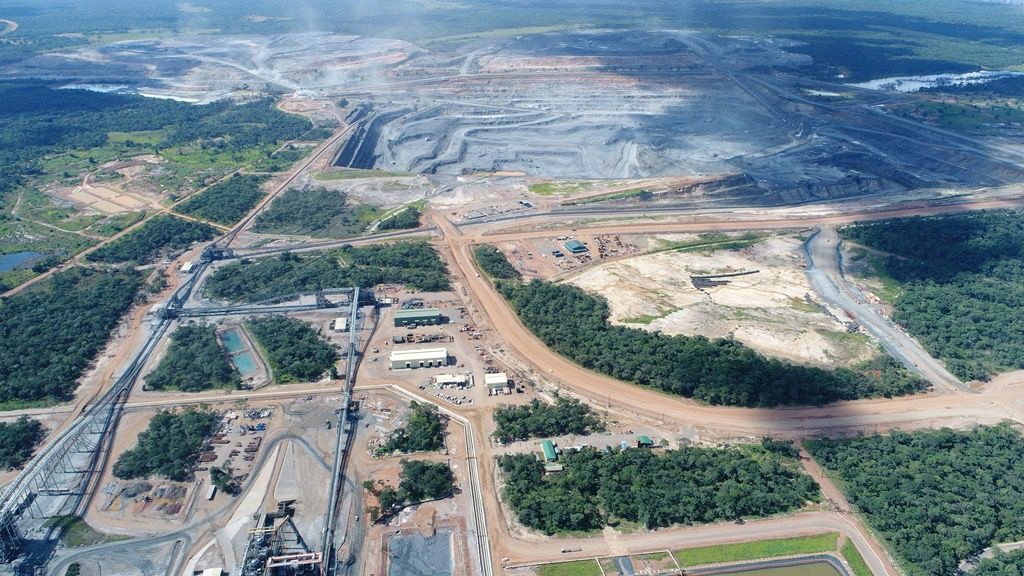
Africa’s largest copper-gold mine to run on renewable energy
First Quantum Minerals (FQM), the company that notably operates Africa’s biggest copper mine by production in Zambia, has entered into a new partnership with Chariot and Total Eren to develop 430 MW of solar and wind power for its mining operations in Zambia. Both Chariot and Total Eren had signed last year binding key terms of a long-term joint-development partnership to jointly originate and develop wind and solar projects for mining clients in Africa. Their project in Zambia with FQM would be unique in scale for Africa and help the global mining company to decarbonize its operations as it seeks to reduce its carbon footprint by 30% by 2025. Additional renewable energy capacity would notably support operations at FQM’s flagship Kansanshi copper-gold mine new Solwezi in Northern Zambia. Since 2005, FQM has expanded its operations there and is now capable of producing 340,000 tonnes of copper and more than 120,000 ounces of gold per year.
Read more »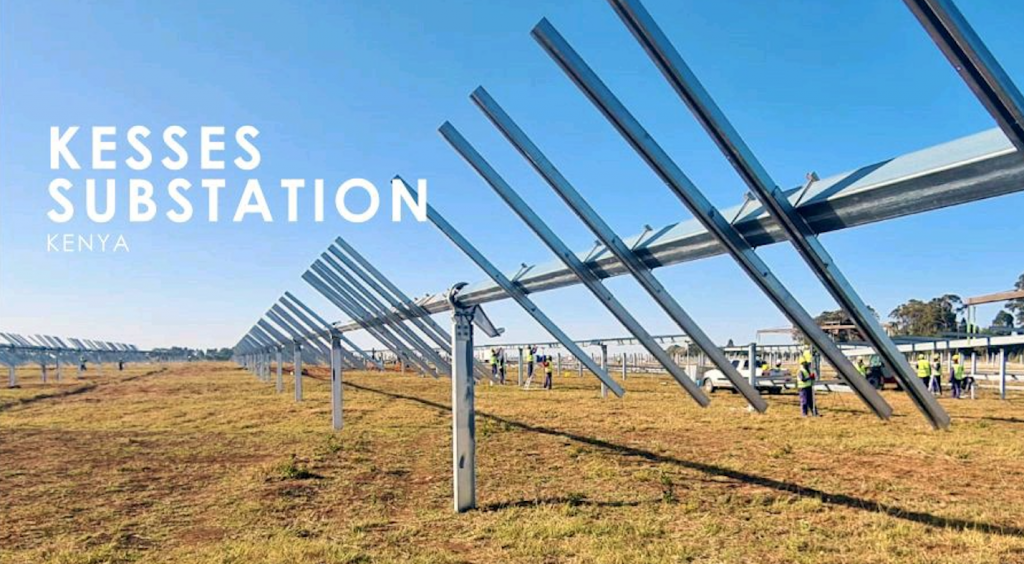
Kenya’s 40 MW Kesses 1 solar PV facility expected online in Q2 2022
In Kenya, Alten Energías Renovables is expected to commission its 40 MW Kesses 1 solar PV plant in the spring this year. The company is currently constructing the facility outside of Eldoret in Kenya. It is located only 1km away from the existing Eldosol and Radiant solar plants of Frontier Energy, each equipped with a solar power generation capacity of 40 MW. Together, they form what is known as the Eldoret Solar City, and one of sub-Saharan Africa’s biggest solar complexes. Kesses 1 is notably financed by the Standard Bank of South Africa and the Emerging Africa Infrastructure Fund (EAIF), part of the Private Infrastructure Development Group (PIDG). Standard Bank is supplying $41 million in debt comprising a term loan, VAT and Debt Service Reserve facility. Meanwhile, the EAIF is providing a US$35 million loan over a 15-year term. “The first part of the loan was disbursed to Alten Kenya Solarfarms BV (Alten), the Kenyan business of the Alten Group, in late December 2021,” the EAIF said in a statement last week. Kesses 1 is being developed in parallel with the 50 MW Kopere Solar PV Plant located 60km away, as both projects are executed by the same contractor, Voltalia. Full details on the solar power plants within Kenya’s Eldoret Solar City are available in the “Projects” section within your Hawilti+ research terminal.
Read more »
All On and partners launch $10m global aggregated renewable energy procurement programme in Nigeria
Nigerian impact investment company, All On, Odyssey Energy Solutions, and the recently launched Global Alliance for People and Planet (The Alliance) have launched this month a global aggregated procurement programme for renewable energy companies in Nigeria. The initiative is supported by a $10 million financing facility managed by All On. Dubbed “Demand Aggregation for Renewable Technology (DART)”, the programme will ensure that affordable, high quality solar products reach the communities most in need in Nigeria. If successful, the programme will then be piloted in four additional countries in Africa. In its core, the DART programme combines demand pooling and aggregated purchasing of solar equipment, access to affordable finance, and coordinated logistics processes to unlock economies of scale for solar companies and achieve cost savings for end users. The $10m All On-managed finance facility will provide debt funding for solar companies already approved by the Rural Electrification Agency (REA) for the Nigeria Electrification Program (NEP) to purchase lower-cost solar equipment through the DART.
Read more »
Burkina Faso makes headway towards 110 MWp of new solar PV capacity
Last week, the Dutch entrepreneurial development bank, FMO, announced the completion of financing and contracting for 110 MWp of solar PV capacity in Burkina Faso. In total, four different solar projects are now entering the construction phase: Kodeni Solar (38 MWp), Nagreongo-SPES Ouagagoudou (30 MWp), Quadran Burkina Faso (24 MWp) and Dedougou Solar (18 MWp). FMO is the prime lender to all projects, representing 52% to 65% of the debt raised for each facility. Its co-financiers include Proparco, the private sector financing arm of the French Development Agency (AFD), and the Interact Climate Change Facility (ICCF), a European co-financing vehicle notably involving the AFD, BIO, DEG, Finnfund, Norfund, OeEB, Proparco, SIFEM and Swedfund. FMO is proving a total of €90m for the projects, while the ICCF is providing €20.9M and Proparco the remaining €15.9m. The S.P.E.S Ouagadougou facility in Nagréongo remains the most advanced of the four projects. It officially broke ground in October 2020 during a ceremony presided over by Minister of Energy Dr. Bachir Ismaël Ouedraogo. Out of 344 MW of grid-connected generation capacity in Burkina Faso last year, only 60 MW was from renewable energy sources. By the time all new solar plants are completed and operational, the country’s total installed power generation capacity will have climbed to 456 MW. Almost 38% of the country’s energy mix will then rely on renewable energy.
Read more »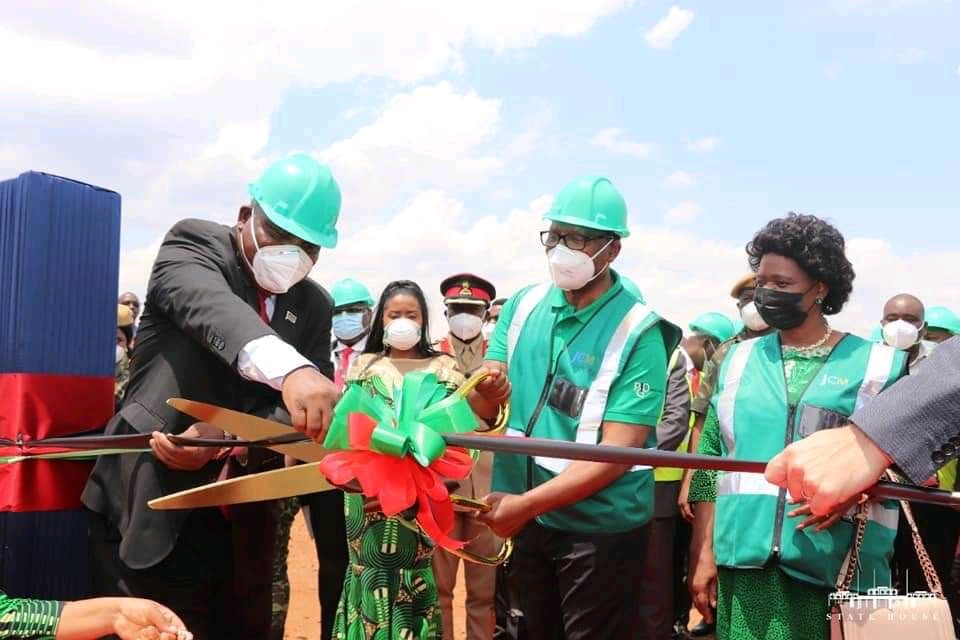
Southeastern Africa’s biggest solar PV plant opens in Malawi
President of Malawi, Dr. Lazarus Chakwera, officially inaugurated and commissioned the 60 MW Salima solar PV plant this week in Malawi’s Central Region. The Salima Solar project originated back in 2013 and entered the planning and design phase in June 2015. With 60 MWac, it is by far Malawi’s biggest solar plant and one of the largest solar facilities in Southeastern Africa. A Competitive International Tender While Canadian independent power producer (IPP) JCM Power had initially entered bilateral negotiations with Malawi’s state-utility Electrical Supply Corporation of Malawi Limited (ESCOM) for the project, Salima Solar is in fact the result of a competitive tender. A consortium led by JCM Power Corp. and InfraCo Africa with Matswani Capital won the project and developed and constructed the facility at a cost of over $75m. The same consortium was eventually selected to develop the 20 MWac Golomoti Solar, a project that broke ground in March 2021 and is considered a sister facility to Salima. Supportive Financing Structures To finance the facility, $6.5m was provided by InfraCo Africa while the PIDG provided technical assistance funding of $6.44m (including $6m of VGF and $440,000 of grants). On its side, the FMO provided $8.2m for the project through its Access to Energy Fund, used to finance construction. The project also benefited from guarantees issued by the Multilateral Investment Guarantee Agency (MIGA) amounting to $58.58m and covering 90% of the equity investments for up to 20 years. In July 2021, the African Trade Insurance Agency (ATI), under its Regional Liquidity Support Facility (RLSF), also announced a revolving liquidity guarantee that can be drawn following any payment delays by the national off taker, the Electricity Supply Corporation of Malawi Limited (ESCOM). A Pathfinder for Malawi’s Diversifying Energy Mix Salima Solar was awarded and developed when Malawi’s electrification rate stood at below 13%. The country continues to suffer from frequent power outages and over reliance on hydroelectric stations whose operations suffer from rainfall fluctuations. As a result, the Government of Malawi modernised its regulatory environment to attract private capital into the country’s energy sector and diversify the energy mix with additional sources of clean energy such as solar. A project like Salima is a true pathfinder in that regards and is critical to the country reducing its spending on expensive diesel generation and dependence on hydropower. Overall, the facility is expected to provide electricity to 1.4 million Malawians and support 600 jobs. It is now able to generate over 146 GWh of energy every year. Details on the Salima Solar PV Project are available in the “Projects” section within your Hawilti+ research terminal.
Read more »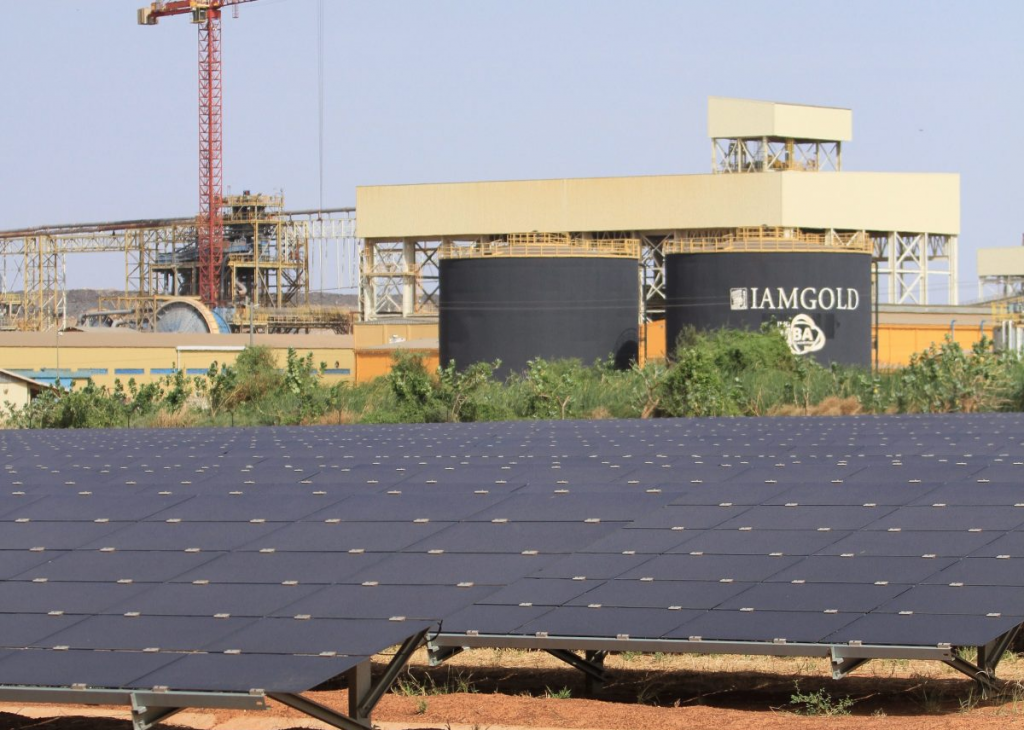
Chariot partners with Total Eren to offer clean energy solutions to mining companies in Africa
Chariot has signed binding key terms of a long-term joint-development partnership with Total Eren, the company said this morning. By working with Total Eren, Chariot intends to jointly originate and develop wind and solar projects for mining clients in Africa. The partnership will have an initial duration of three years and start on January 1st, 2022. It can then be extended for a further two years. Under the agreement, Chariot will have a right to invest between 15 to 49% into the co-development of projects. Earlier this year, Chariot has acquired the business of Africa Energy Management Platform (AEMP) for $2m. The renewable and hybrid energy project developer had an ongoing strategic partnership with Total Eren and both entities were already looking at a pipeline of 500 W of power to African mine operators. Under that partnership, AEMP had a right to invest in up to 15% project equity at cost in projects developed by both partners.
Read more »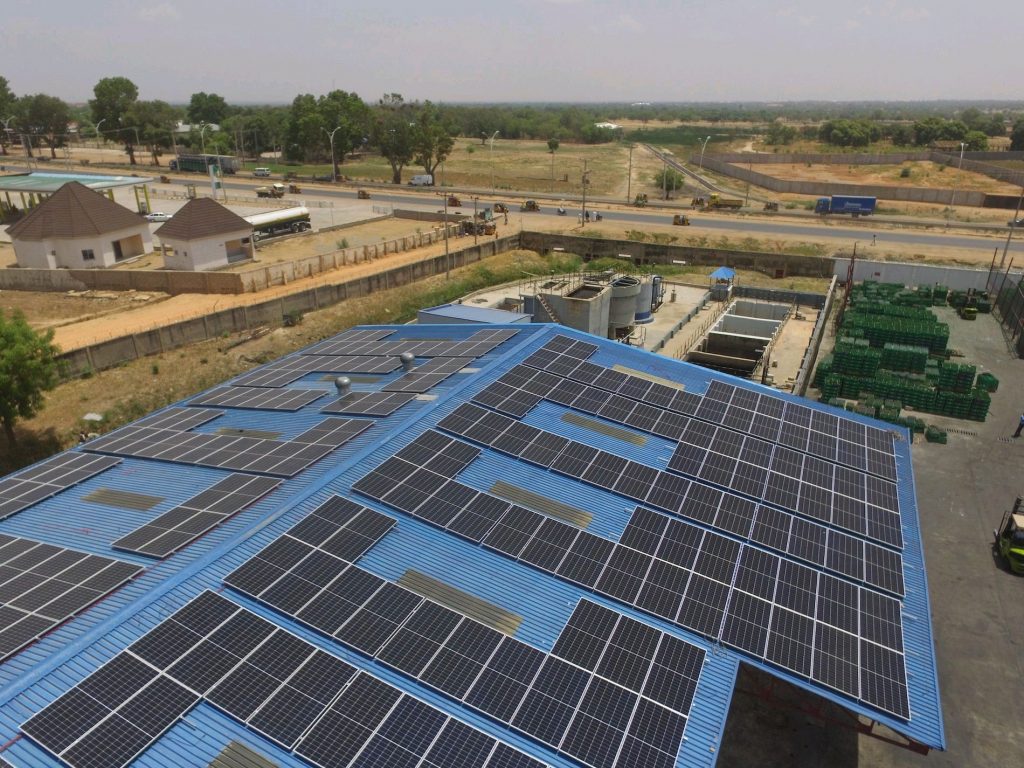
Nigeria’s leading beverages manufacturer goes full on solar
Seven-Up Bottling Company, Nigeria’s manufacturer of soft drinks such as Pepsi, Mirinda, Seven Up, H2oh!, and Mountain Dew, has decided to switch to solar as a primary day-time source of energy over all its Nigerian factories. The company has signed a deal with Daystar Power to install 10.5 MW of solar power systems for five more factories in the country. Earlier this year, both companies already partnered for the design, operations and management of almost 1.5 MW of solar power systems over SBC’s bottling plants in Kaduna and Kano. The five additional factories will comprise those of Abuja, Lagos (Ikeja), Ibadan and Ilorin, all expected to be powered by solar over the next six months. By 2022, SBC will be Nigeria’s largest industrial manufacturer to use solar energy in its operations. Both companies have also announced being in discussions to roll out solar energy as the primary daytime power source for SBC’s remaining two sites in Nigeria. According to Daystar Power, the solar power systems at the factories could provide over 50% of its total daytime power consumption depending on the installation size and amount of sunshine.
Read more »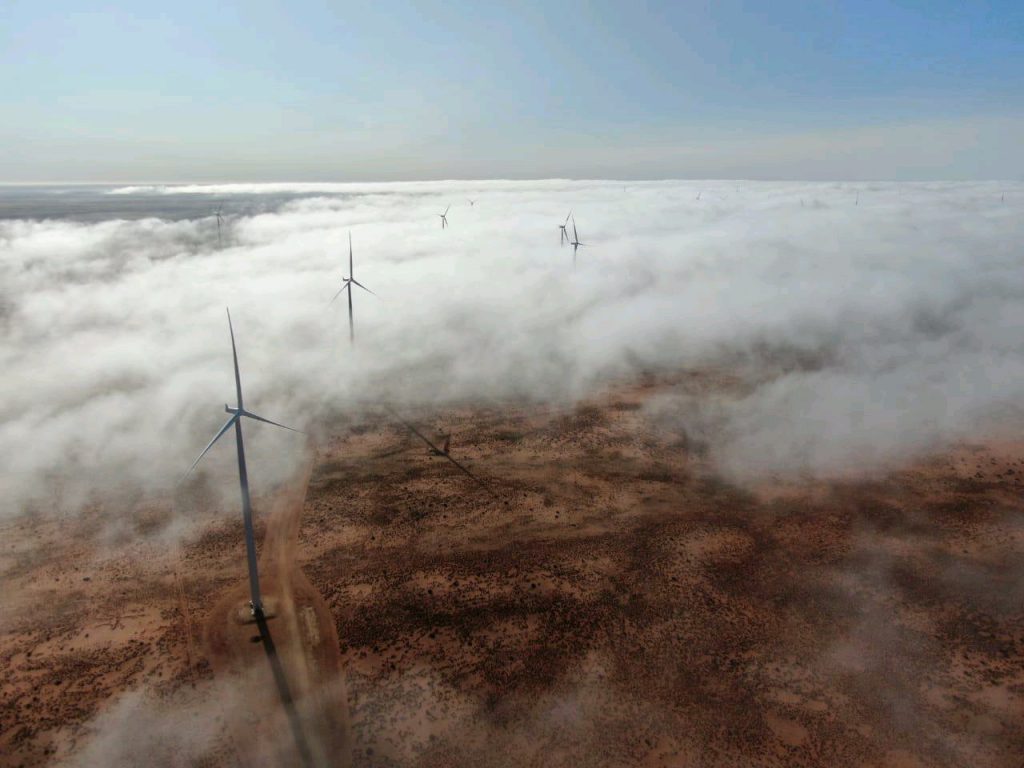
Mainstream Renewable Power big winner in South Africa’s 2.5 GW renewable energy bid round
South Africa’s Minister of Mineral Resources and Energy (DMRE), Mr. Gwede Mantashe, has announced yesterday the preferred bidders for the Renewable Energy Independent Power Producers Procurement Programme (REIPPPP) Bid Window 5. The round resulted in the selection of five consortium as preferred bidders for 25 projects totalling 2,583 MW of renewable energy. The bidders will jointly invest R50 billion in those projects, expected to reach financial close early next year and to start generating by April 2024. Out of the 2.5GW of awarded capacity, 1,608 MW will be based on onshore wind and 975 MW on solar PV. Mainstream Renewable Power alone secured 12 projects totaling 1,274 MW (824 MW of onshore wind and 450 MW of solar PV). To date, the company has been awarded over 2.1 GW of renewable energy projects under the REIPPPP and has become the largest renewable energy developer of the country by capacity. The company currently owns 100% of the projects awarded but ownership will transfer to the equity consortium upon financial close including Mainstream (25%), Globeleq (26%), Africa Rainbow Energy & Power (23.25%), H1 Holdings (23.25%) and Community Trusts (2.5%). Other preferred bidders notably include Scatec with 273 MW, a Norwegian company that entered the South African energy market back in 2010 and already commissioned several solar PV projects under previous REIPPPP windows. Scatec had also secured three solar projects totaling 150 MW during the 2 GW Risk Mitigation IPP procurement programme (RMIPPPP) earlier this year. Scatec will own 51% of the equity in the projects while its local Black Economic Empowerment partner H1 Holdings will own 46.5% and a Community Trust holding will hold the remaining 2.5%. Scatec will also be the Engineering, Procurement and Construction (EPC) provider and provide Operation & Maintenance as well as Asset Management services to the power plants. EDF Renewables secured three projects, as did Engie and Red Rocket. Finally, the joint-venture of Mulilo and Total secured one project. Mulilo Total is already progressing two projects it has been awarded under the RMIPPPP last June, with a combined capacity of almost 275 MW. Window 5 resulted in some of the cheapest bid price on record, making South Africa’s wind and solar energy very competitive against coal. From 2012 to 2015, South Africa already awarded 6.3 GW of renewable energy capacity via windows 1, 2, 3, 3.5 and 4. Thousands of jobs were created, while attracting billions on foreign direct investment. While the projects from Window 4 are just reaching commissioning stage, South Africa just closed its Risk Mitigation IPP Procurement Programme (RMIPPPP), awarding another 2 GW of projects earlier this year. Following Window 5, Window 6 is expected to be launched this year to announce the winners in May 2022, while Window 7 would be launched in 2022 to that winners are awarded in Q3 of the same year. Finally, South Africa is also planning a storage and gas-specific windows, with the former launched in November this year while the latter would see its request for proposal issued in Q1 2022.
Read more »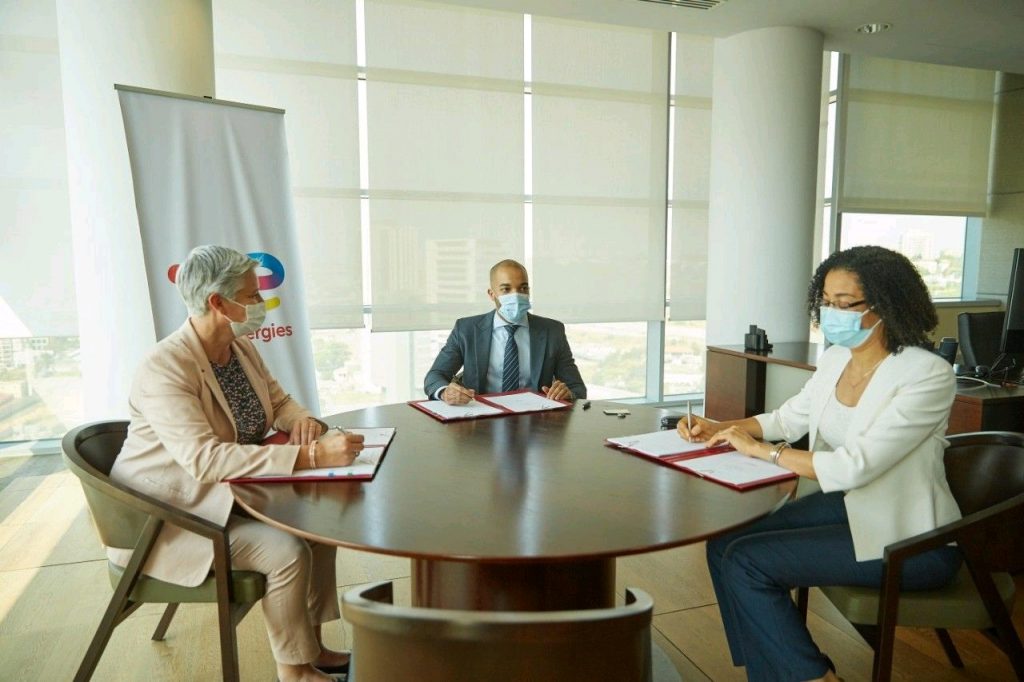
Total Eren signs Shareholders Agreement for 35 MW solar PV project in Angola
Sonangol, Total Eren, and Greentech – Angola Environment Technology Ltd (Greentech) have announced that they executed last week the Shareholders Agreement establishing their partnership on the 35 MWp Quilemba Solar project in Angola. According to the agreement, Sonangol will be acquiring a 30% interest in Quilemba Solar Lda, while Total Eren and Greentech will own 51% and 19% respectively. The plant will be constructed in Lubango, capital of Angola’s Huíla Province. It has been in the making since late 2020, when Total Eren and Greentech signed a Memorandum of Understanding (MoU) with the Angolan Ministry of Energy and Water (MINEA) for the its construction and operation. Quilemba Solar is one of many utility-scale solar projects currently being developed in Angola, in line with the country’s vision to commission up to 500 MW of renewable energy capacity between 2022 and 2025. Italian major Eni is also involved in the development of a 50 MW solar PV plant in the country at the Bibala Municipality in the Namibe Province under a joint-venture with Sonangol called Solenova. Earlier this year, the consortium of Sun Africa, MCA Solar Angola and Hitachi ABB Power Grids also broke ground on 370 MW of solar PV projects in the country. These are split across seven different facilities now under-construction, including the 188.88 MWdc Biopioa solar plant and the 96.70 MWdc Benguela solar plant. Last month, Sun Africa took its commitment to Angola a step further with the signing of a memorandum of understanding for the development of Africa’s largest mini-grid and rural electrification project at a cost of $1.5bn. Full details on Sun Africa, Total Eren and Solenova’s solar projects in Angola are available in the “Projects” section within your Hawilti+ research terminal.
Read more »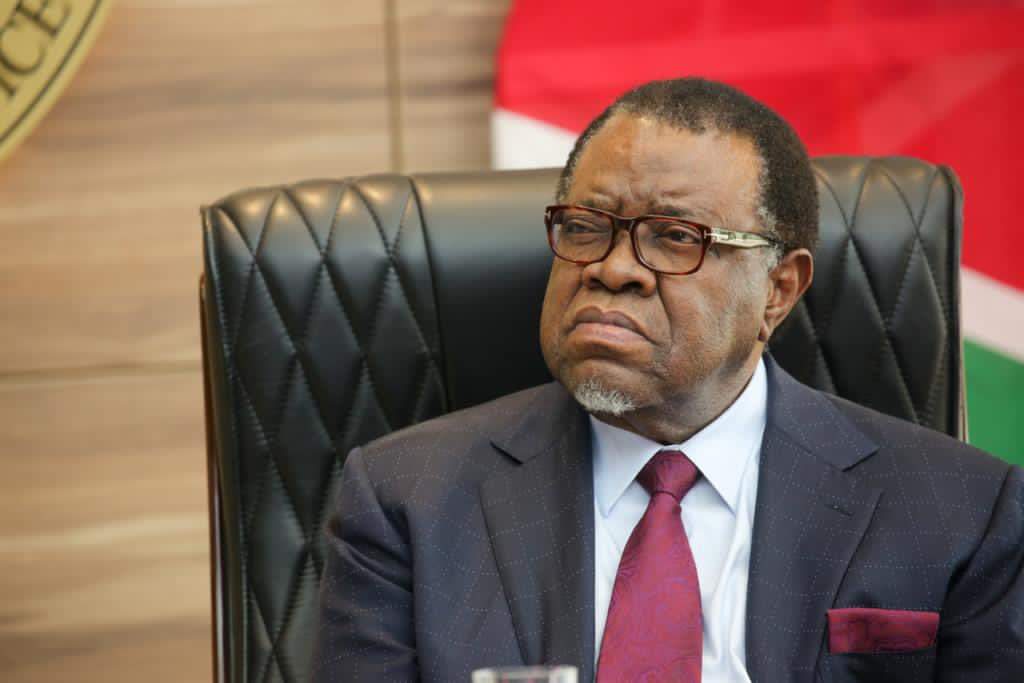
Namibia is poised to become the renewable energy hub of Africa
by Hage G. Geingob, President of Namibia, Office of the President of Namibia for the World Economic Forum Namibia launched its Second Harambee Prosperity Plan (HPPII) in March 2021. The country is on course to develop a green and blue economy as articulated under the economic advancement pillar of the plan. By electrifying key parts of its economy, the Namibian government will spur unprecedented economic activity and growth for citizens. In March 2021, as I launched Namibia’s Second Harambee Prosperity Plan (HPPII), I reflected on the need to emphasize the importance of multilateralism in our efforts to foster an enduring economic recovery. Namibia’s policy on international relations and cooperation is anchored in multilateralism because our very independence was a product of international solidarity. We are a nation that was midwifed by the United Nations. It is for this reason that as we crafted our green economic recovery plan; we knew that it had to build a more sustainable future for our children and their children. Namibia is a small, open economy that is impacted by independent intervening variables, including climate change and its disruptive consequences. Our economy is heavily reliant on the agricultural sector, which employs more than 20% of our labor force. Namibia experiences recurrent droughts, the most recent of which have been recorded as the worst in history. These droughts can be linked to climate change, which according to the 2021 Intergovernmental Panel on Climate Change (IPCC) report, is unequivocally a man-made phenomenon. Therefore, Namibians must play a role in crafting climate-change solutions, not just for the sake of our citizens, but indeed for the global community at large. Accordingly, Namibia is poised to tackle climate change, by establishing a green economy that will drive our economic recovery as envisioned for African countries by African Heads of State during the launch of the African Union Continental Green Recovery Action Plan. In this context, we have ambitious plans to develop green and blue economies as articulated under the economic advancement pillar of our HPPII. The feasibility of these plans is underscored by the abundant availability of sunlight throughout the year and proximity to billions of cubic meters of seawater and vast marine resources in the Atlantic Ocean. We have the potential to capture around 10 hours of strong sunlight per day for 300 days per year. As a result, Namibia has some of the highest solar irradiance potential of any country in Africa, which is sufficient to provide power for our people and our neighbours. It is with this potential in mind that we have entered into a partnership with the Government of Botswana and the United States – under the auspices of USAID’s Power Africa – which culminated in the signing of a Memorandum of Intent in April 2021. With support from the global community, we intend to utilize the abundance of sunlight to produce solar power for our own benefit and for our neighbours. The generation of solar power will complement Namibia’s available green energy portfolio, such as hydro-electricity, which already constitutes more than two-thirds of our installed power capacity. Electrifying key parts of our economy and of our neighbours will spur unprecedented economic activity and growth for Namibia and Southern Africa. A Green Hydrogen Economy It is well known that clean electricity is not available in sufficient quantities to adequately supply global demand. This challenge was underlined in the Net Zero by 2050 report published by the International Energy Association (IEA), which noted that hard-to-abate sectors – like cement, steel and chemicals, road trucking, container shipping, and aviation – will need green hydrogen if the world is to remain on course to achieve climate neutrality by 2050. Namibia is better-positioned resource-wise, as well as having the political will to answer that clarion call. To produce green hydrogen competitively a country would need world-class transmission infrastructure, international port facilities, world-class wind and solar resources, access to sustainable sources of clean water (without displacing existing consumers), lots of land and a conducive legislative environment. These are all ingredients that Namibia has. Already, our country is home to the largest desalination plant in Southern Africa, meaning that the conditions for producing abundant clean water in a desert country are conducive. Once Namibia has successfully incubated the green hydrogen economy, it will enable the country to become a supplier of energy, rather than an importer. Judging from the scale of the initial proposals submitted to Namibia by interested investors, these renewable projects, relative to the size of Namibia’s economy, will be greatly transformative to the Namibian economy. Currently, at its peak, the economy consumes about 640 megawatts of power per annum whereas the proposals presented to government entail investments that could produce 10 times that amount of peak generation capacity in the next 10 years. But Namibians will not have to wait until 2030 to start enjoying the benefits of our green revolution because construction of the pilot plants will begin within the next 12 months. A New Frontier The required infrastructure for power trading already exists. About 40% of Namibia’s power currently comes from South Africa and is primarily driven by coal-fired power plants. We imagine a reality where Namibia exports clean energy to South Africa thereby assisting the Southern African region to decarbonize. Namibia also boasts world-class port infrastructure in the cities of Luderitz to the south, and Walvis Bay to the east. Renewable electricity, and green hydrogen and its derivatives, provide Namibia with a real opportunity to attract meaningful foreign direct investment, create well-paying jobs, further diversify its export basket, and improve its terms of trade. Therefore, the development of a green and blue economy, as well as a green hydrogen industry, are some of the cornerstones of the HPPII. As Namibia embarks on this new frontier, it is imperative that its vision of shared prosperity on the national, regional and global levels is realized. Meaning that we do not neglect those without access to political and economic power today nor exclude those who currently rely on carbon fuels. COVID-19 has already widened the existing chasm of inequality, a scourge Namibia is all too familiar with.
Read more »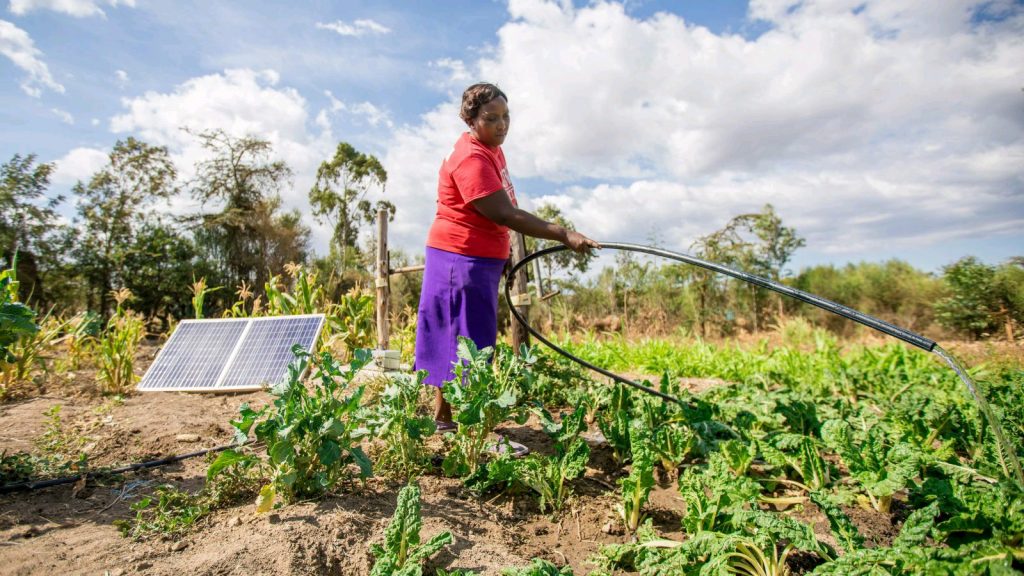
IsDB allocates $20 million for Togo’s rural electrification
During its 342nd period meeting under the chairmanship of H.E. Dr. Muhammad Al Jasser on Sunday, the Islamic Development Bank has approved $20.15 million for a rural electrification project based on mini solar power plants in Togo. In addition, the IsDB announced that its Lives and Livelihoods Fund provided $10.85m to improve the level of human development in Togo by delivering sustainable supply of electricity to the rural population of Togo. It benefits 372 schools, 22, 092 families, and 102 health centers. The Jeddah-based institution is a traditional partner of Togo’s electrification agenda. It has notably already released $49m in the form of loans to support projects in the north of the country, including the extension of the 161 kV high voltage network of the CEB from Dapaong to Mango.
Read more »